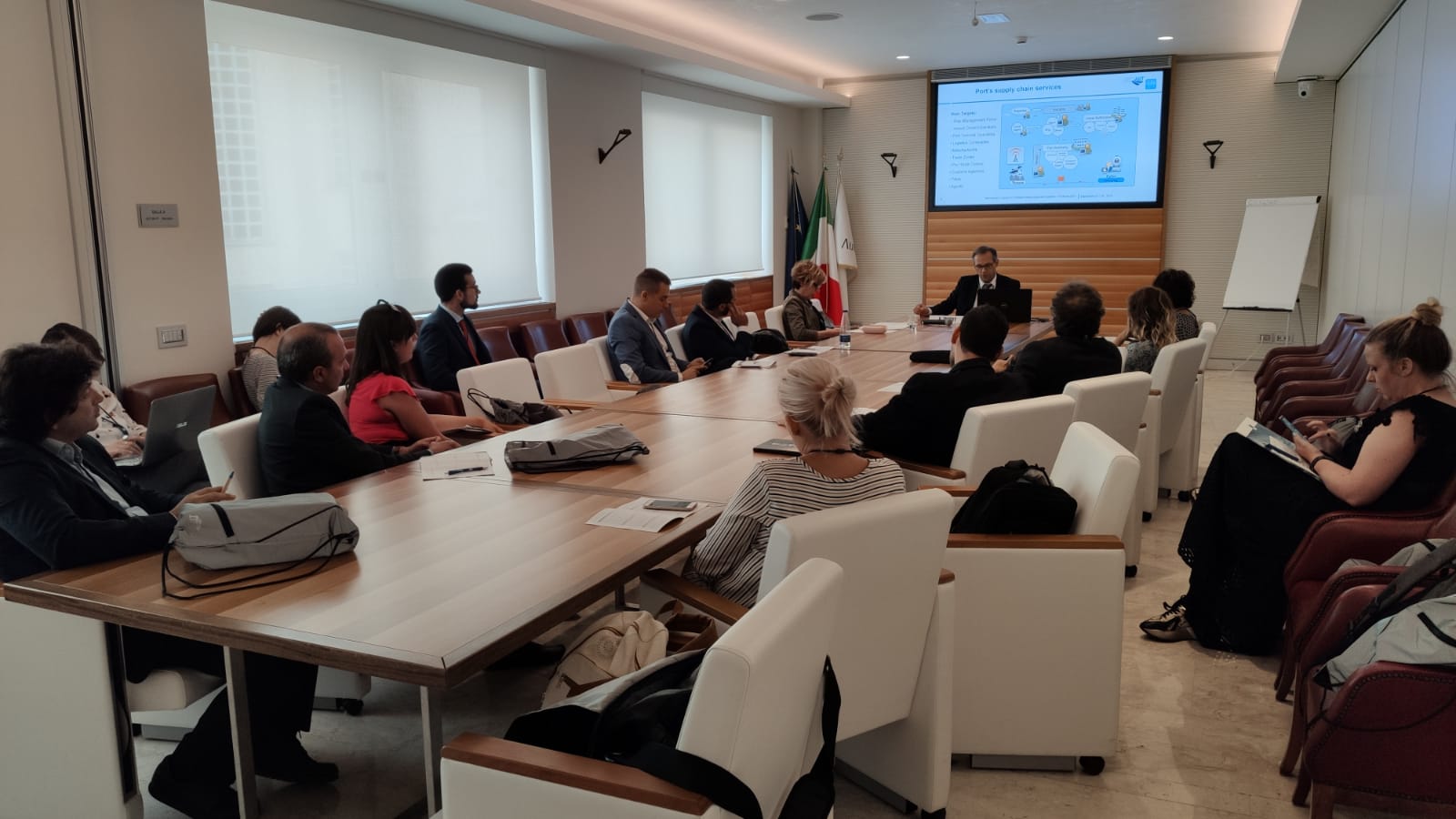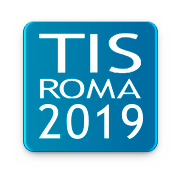TIS 2019
Session 7 – Maritime Transport

The papers discussed during session 7, chaired by Maria Attard presented various experiences of Maritime Transport.
Juan Ignacio Alcaide and Ruth Garcia Llave – Critical infrastructures cybersecurity and the maritime sector / The paper was about cybersecurity in the maritime field, a sector increasingly vulnerable to cyber attacks due to advances that are already in the process of implementation. This paper explores port’s supply chain services where the main targets are: ship management firms, vessel owner/operators, port terminal operators, logistics operators, manufactures, trade zones, port state control, customs agencies, pilots and agents. Recent high-profile incidents ( Maersk, Cosco, BW Group and Clarksons) have raised awareness of the risks facing maritime companies and increased the need for the sector to take the issue seriously.
The results shows that the professional profile of the participants has the following percentage: Terminal and ports 40,5%, ships 43,8% and other sectors 15,7%. However, 33% of the respondents show that they have suffered some type of cyber-incident in the last year and data online with growth of cyber threats in the sector and 40% share passwords between users and does not make any type of preventive use like email, USB, web, etc. Conclusion is that the analysis of critical infrastructures and cybersecurity conducted in this study shows that the dynamics of maritime sector exhibit vulnerabilities and critical components. There is a disarrangement between the practices of stakeholders and the vulnerability to hand which can be improves with the training and it’s systems of implantation in the maritime industry. Therefore, it’s necessary to increase training levels in the maritime sector and ports interface connection with the supply chain. In the digital world, the shipping companies and their supply chains actors must be prepared for possible cyber-attack or threats and resilience.
Carmine Aveta and Carla Romano-A port planning study case: the freight strategy of the new Central Tyrrhenian Sea Port Authority 2017-2020 / The port industry sector is one of the main drivers of economic development in Italy, with important employment implications. The economic crisis has accentuated its importance, and it has increased competition among ports in the Mediterranean basin.
For this reason, the Italian Ministry of Infrastructures and Transport (MIT) has foreseen a long-term strategy to improve the system efficiency. The first step was the adoption of the National Strategic Plan for Ports and Logistics (NSPPL). Ports of Naples, Salerno have been merged into the Port Authority System of the Central Tyrrhenian Sea, with only the first two carrying out freight traffic. In the first months of 2017, Port Authority published its first Triennial Operational Plan 2017-2019 (TOP) – with a projection to 2020 – where development strategies are defined, among which the ones for the goods.
This document, containing data on freight traffic – including an ARIMA model application regarding historical data series on freight traffic (tons and TEUS)- and executed projects, has led to an analysis of the policies implemented by the Port Authority to improve the competitiveness of the ports, including the level of service offered. The aim of this paper is to evaluate the freight evolution of both Naples and Salerno’s ports through the new TOP, using a structured, replicable and adaptable methodological approach and providing suggestions to decision-makers on emerging priorities.
Matteo Ignaccolo, Giuseppe Inturri, Nadia Giuffrida, Vincenza Torrisi and Elena Cocuzza – Sustainability of Freight Transport through an Integrated Approach: the Case of the Eastern Sicily Port System/Port systems, especially if close to the city centre, are affected by significant traffic flows from and towards the port area causing congestion issues, security and several externalities on the mobility system. In fact, the main problems affecting port cities are generated by the mismatch between different vehicle flows (of goods, citizens, cruises, passengers, private cars and heavy vehicles) and the consequent creation of bottlenecks, greatly affecting the functionality of both the port and the city. The objective of this paper is to apply a framework of actions and measures to foster the three pillars of sustainability in the case study of the Eastern Sicily port system, involving the ports of the cities of Catania and Augusta. Data concerning freight traffic have been acquired from the port authority and from the main terminal and logistic operators; an analysis of terminal operation efficiency has been performed though the application of a methodology involving the calculation of capacities of terminal gateways, customs and border control facilities, while traffic volumes and flows are obtained through traffic real-time monitoring, estimation and forecasting systems.
The study shows advantages and disadvantages of already implemented measures and new planning scenarios for the two ports that are part of the system.
The paper clearly defines the key elements needed to be taken into account when demonstrating efficiency of a ports’ system. The methodology can be considered suitable in order to support administrations in the assessment of different alternatives in the short and in the long period.
Gianfranco Fancello, Patrizia Serra, Alessandra Schintu and Andrea Zoratti – Performance evaluation of a tracking system for intermodal traffic: An experimentation in the Tyrrhenian area / The monitoring of shipments along intermodal chains and maritime networks is recognized as one of the crucial factors to ensure a fast, reliable and secure transport of goods. In this regard, this paper describes the results of a real-life tracking experimentation that was carried out in June 2018 in the Tyrrhenian area with a twofold objective:
1) evaluating the performance and reliability of a state-of-art tracking system to effectively monitor ro-ro freight units moving along intermodal chains;
2) taking an objective look at the intermodal chains currently connecting the two main Italian islands with the mainland.
The experimentation was performed by means of a tracking device using the GSM network for data connection and geographical position detection. In addition, the Automatic Identification System (AIS) data was used to improve positioning during navigation. Quantitative analyses +4500h of tracking recorded, carried out on the recorded tracking data revealed that a significant share of the total transport time of the monitored transport chains is actually un unproductive time that goods spend waiting at the port and logistics nodes. From a technical point of view, the experimentation raised a number of problems of the used tracking technology concerning real-time tracking, continuous monitoring, signal coverage and positioning accuracy. This study can hopefully provide some useful insights for the development of more effective trackng solutions for road-sea chains on the basis of the detected operational challengers.
Miguel Hervás-Peralta, Tomislav Rožić, Sara Poveda-Reyes, Francisco Enrique Santarremigia, Juan-Pascual Pastor-Ferrando and Gemma Dolores Molero – Modelling the performance of port terminals using microsimulation / Globalization is increasing cargo volumes in ports, what is starting to produce ports congestion in some of the main ports (e.g. Rotterdam, Hamburg, Los Angeles, Radès), delays in the whole supply chain, higher costs, retentions in the vicinity of ports and more pollution. This highlights the need to improve current container terminals searching for enhanced management models.
The Terminal Operating System (TOS) is the operational control system used in container terminals. The improvement of TOS with better functionalities, and their optimization, would increase the efficiency of the terminal (e.g. increasing the container throughput and reducing operational time).
In a previous study, the authors identified and weighted TOS functionalities using the Analytic Hierarchy Process (AHP) method. The aim of this paper is to analyze by microsimulation how the improvement of the most influential TOS functionalities affects the operational and the environmental performance of a container terminal which act as a case study.
Two new TOS (TOS2 and TOS3) were compared with the TOS (TOS1) currently used in Intersagunto terminal (Puerto de Sagunto, Spain) by microsimulation with FlexTerm software. Some of the functionalities modified in the TOS were: i) times tracking of vessels, ii) management and control of terminal capacity, iii) loading list, iv) yard optimization, and v) inventory tracking and management.
The developed simulations show that modifications in TOS can improve certain operational aspects as the number of containers handled, the occupation of the storage yard and the dwell times; while there were not significant improvements in energy consumptions and carbon footprint.
Further developments should address this issue by modifying other TOS functionalities in order to obtain both operational and environmental improvements in the terminal.
This paper is addressed to managers of container terminals, TOS designers, researchers in the field of ports and terminals, and port Authorities.
Elen Twrdy and Marina Zanne-Improvement of the sustainability of ports logistics by the development of innovative green infrastructure solutions / Ports represent a crucial link in the logistic chain and as such have an important role in the international economy. More than 450 ports operate on the shores of EU and they handle more than 30 % of global sea-borne trade. In addition, 150 million citizens live in EU coastal zones and another 150 million tourists visit these littoral areas during summer time; therefore, besides assuring the economic viability, the ports have the growing responsibility to act in environmentally and socially friendly manner.
The authors address the problem of sustainability of ports logistics and present the current situation in the Port of Koper, the Mediterranean port located in the North Adriatic, which is a green port certificate holder. Main strategic projects are investment plans: around 300 millions of euro until 2020 and 400 million for the period 2020- 2030. The most important indicators of port impact are : noise, dredging disposal and air quality because of a lot of dust in the port aria thanks to wild. They provide an analysis of the actions that must be taken to provide efficient cargo operations and at the same time meet the demand for sustainable port development. By developing innovative green infrastructure solutions, the Port of Koper can improve its logistics and become even more competent. Conclusion is the ports are complex man-made systems that affect the environment in many ways and therefore they are constantly under pressure to reduce pollution, including greenhouse gases and noise. The port of Koper plans to million tons and potentially also the number of vessels calling will increase, posing additional pressure to the environment and citizens.
CHAIRMAN: Elen Twrdy
